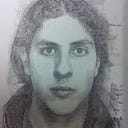Different Types of Light in Unity3D
Besides the light source from a skybox, from emissive material textures, the game space may be brightened through
Four types of Light
- Directional
- Spot
- Point
- Area
- Light Source Culling
This is the view of the Lab Room without any additional lights. It has a bit of glare from the skybox as seen on the floor, reflecting the night light through a window, and texture materials on the walls and equipment that have emissive properties. Besides any glowing game objects and the directional light seen as a rectangle on the floor, the rest of the other game objects are completely dark.
Directional Light
This type of light works as a sunlight, adjustable to full-moon light as well. It travels through the entire game space; it’s position does not change its direction as it is to be perceived as an emissive object out of the world. The main translation effect is its rotation, to create a noon light or a sunset. Here it hits right downwards through the window into the three main terminals of the room. It’s slightly off angle to the left of the center of the room. I want this light direction to make players more prone to circle around the room from the left to the right, walking first through the two small tubes and then to the big one.
For this room, if I remove the tag “Ceiling” layer from the Culling Mask, it will ignore the roof and go through the entire room. This could be great to easily give a tone to the entire atmosphere, but I really love this window and the natural darkness.
Spotlights
This type of light is great to illuminate an area in a cone shape. Easy to widen, shoot angle and adjust longitude/range.
A sense of depth and space is quickly obtain with one spotlight as the outer shape of the test tube quickly illustrates its depth qualities.For the two small test tubes, I want to brightly illuminate the tubes as well as the terminals close to them with the same 2 spot lights. I will widen it’s shape and reduce the emission range to only hit the equipment and not the walls.
Spotlights are great to have an angular light source that gives direction and proximity to light. It’s shaped brightness can be great for many atmospheric changes like a poker table in a very dark room.
Point Light
This type of light is great for ceilings, walls and floors; in general, as a room’s light bulb. It offers a round emission that softly and quickly brings light to a 3D area.
This is how quickly one single point light can flicker and illuminate a completely dark zone in all directions. Point lights are great to give a general atmosphere to a region.
These seven Point lights illuminate most of the floor, walls and corners. They go around the bright path way on the perimeter of the building, leaving the central area dark for the directional light and emissive materials to shine.
Area Light
For now, I won’t use any area lights in this project. Still, this is the area light gizmo, and it particularly works good on static elements as a baked light.
“You might use it to create a realistic street light or a bank of lights close to the player. A small area light can simulate smaller sources of light (such as interior house lighting) but with a more realistic effect than a point light.”
More about the types of light in Unity here.
